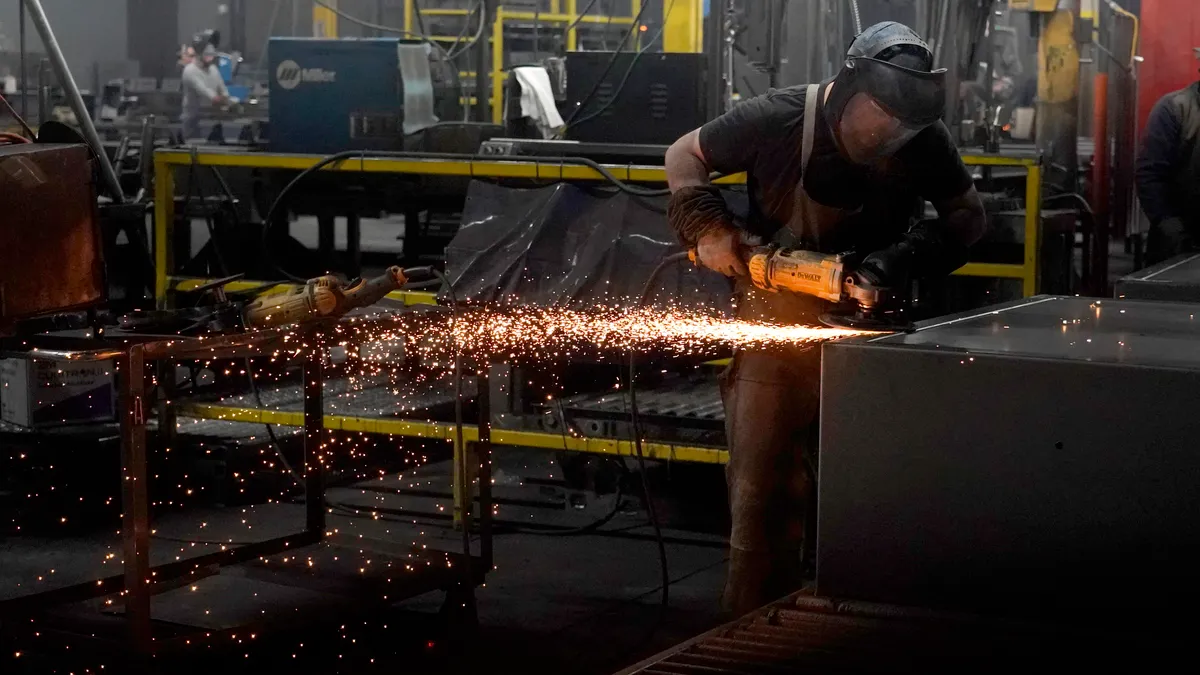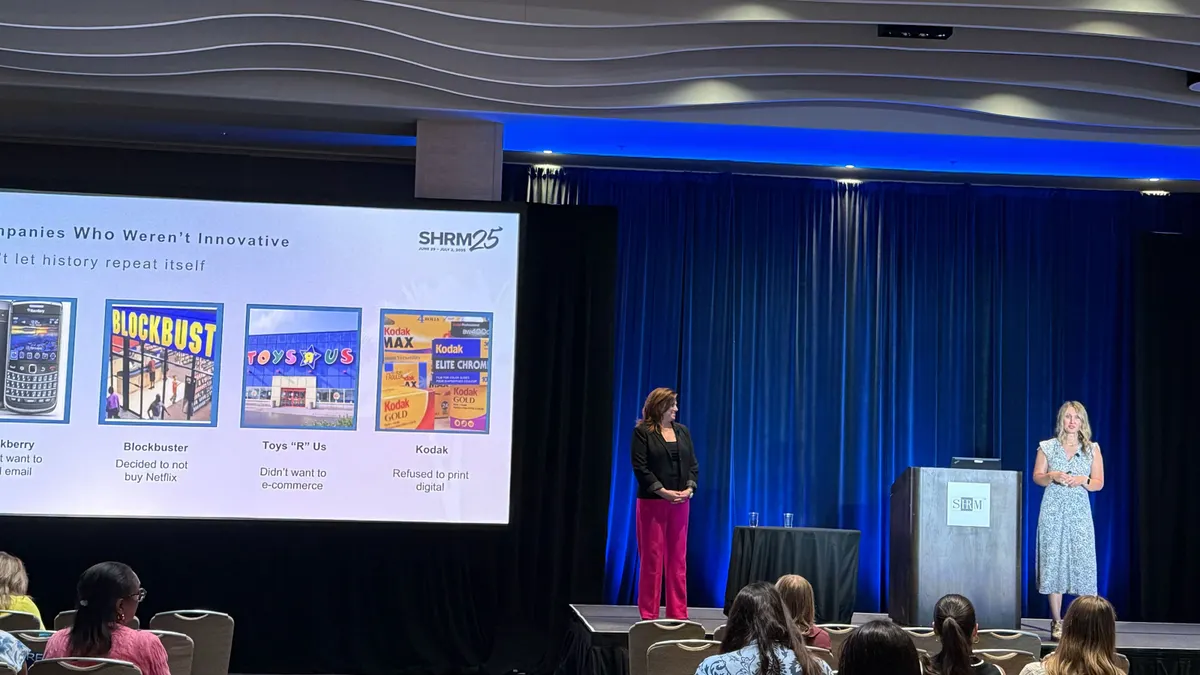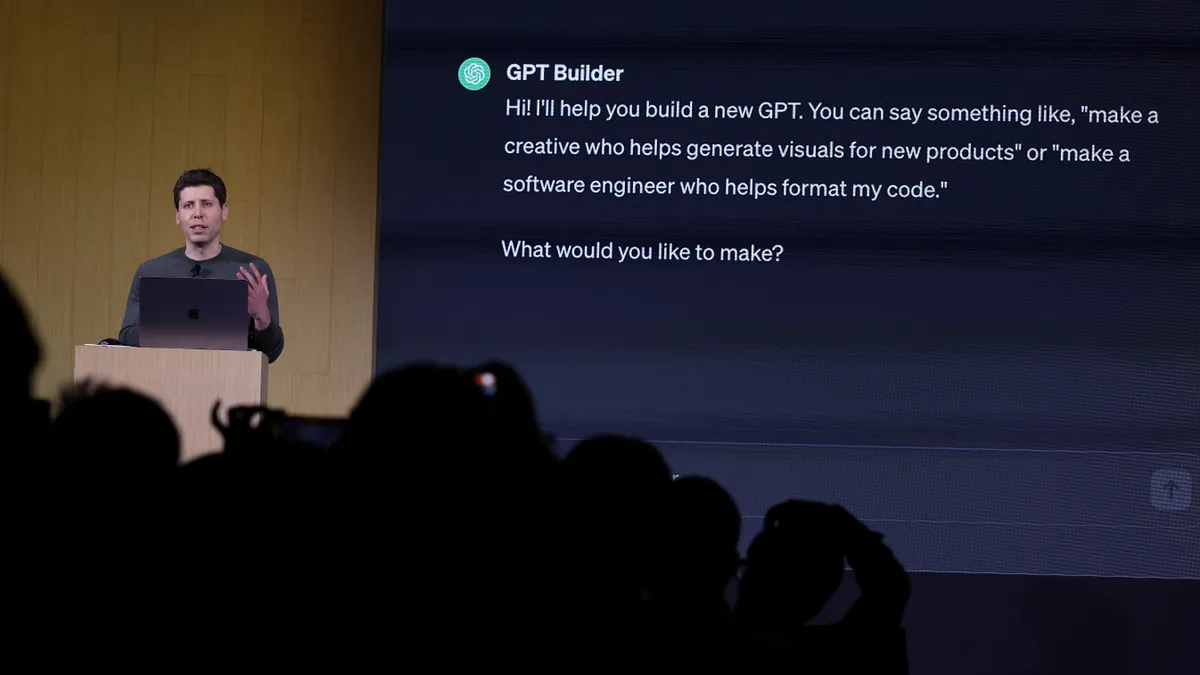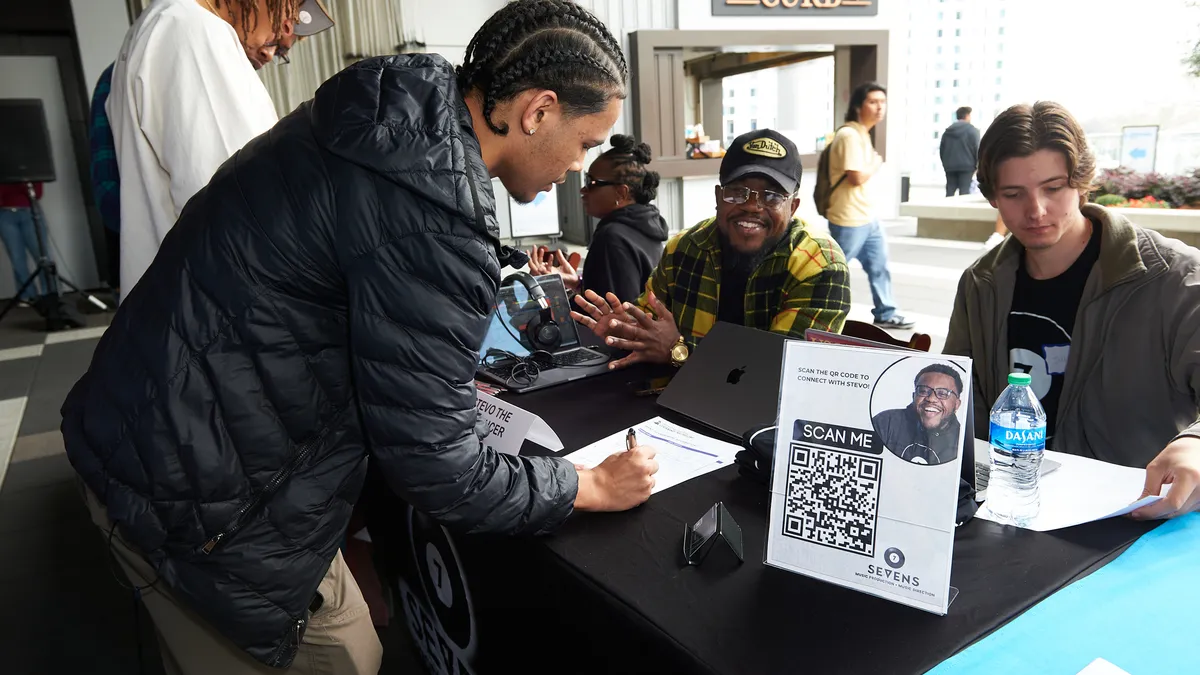Workers know they need training and employers know they need to provide it, but recent data suggests workers are not comfortable asking for help. Could concerns about appearances within company culture be stopping employees from getting the training they need?
Dennis Baltzley, senior partner and global head of leadership development solutions at Korn Ferry, suggested that organizations review learning accessibility with a question: "If a senior leader asked you to bring your development plan along to a check-in meeting, what is your first reaction? Does that fill you with fear and panic? Or would you see it as a genuine sign of interest? The answer to that question will tell you how far your company has to go on the road to being a learning organization."
Talent scarcity and finding those with the right skills are "among the biggest hiring challenges companies face today," Zoe Harte, SVP of HR and talent innovation at Upwork, told HR Dive in an email — and the problem will only become more acute as skills continue to evolve. "To prepare for this tide, it is important for businesses to take an active role in supporting their existing workforces through reskilling and upskilling," she said.
Organizations should consider how both freelancers and younger professionals view learning and development, as both are ahead of the curve when it comes to proactively participating in skill-related training and education, Harte said.
It starts at the top
Like with many HR initiatives, "it starts with the culture," Ujjwal Gupta, co-founder and COO of BenchPrep, told HR Dive in an email. "Companies need to make developing their people a priority and not an afterthought." Learning should be discussed at leadership meetings, all-hands meetings, in emails and on company Wiki pages, he added.
Organizations need to set the bar, Baltzley suggested. "Make learning and development a value and expectation," he said. "Make it part of the fabric of the company — i.e., one Fortune 500 company tells their employees, 'we expect you to grow and change at least as fast as this business!'"
Most development programs will need tweaking once they are in place, Harte said, depending on company goals and employee needs. Organizations must assess how the workforce wants to learn, what departments need specialized skills training, how to leverage skills from agile team members and the expectations from the workforce overall.
Upwork found younger professionals are significantly more likely to believe reskilling is their responsibility and they shouldn't rely on companies. "As a result," writes Harte, "we can expect to see a greater focus on training and reskilling/focus on lifelong learning, as well as a greater reliance on flexible teams to help fill critical skills gaps."
Get managers engaged
It has to be a supervisor's job to talk development Baltzley adds, not just the job of HR or L&D. He suggested employers use "accountability hooks" to be sure development is on people's mind — not in a punitive way, but in ways that exemplify the idea of "challenge and support." As businesses shift away from the annual review process to more frequent, forward-looking check-ins, development should dominate the conversation.
Gupta suggested that managers have regular career development conversations, asking employees what their professional goals are and then helping them build a plan to get there. "If those conversations are happening," he said, "employees will feel confident and comfortable asking for help and advice to accomplish their goals."
For some employees, falling even slightly behind can have long-term effects. Without a solid foundation on the rudiments of software, advanced usage suffers. But many struggle to find ways to explain to their managers that their Word skills are only entry-level, for example. For this reason, experts suggested offering lessons on the basics periodically. Doing so could open the door for some learners to get what they want without admitting their need.
And don't forget about horizontal development, Gupta noted; "Learning and development doesn't have to be strictly vertical." Climbing the corporate ladder is one way to grow, but there are a lot of opportunities to grow horizontally. A great leader will also help their team members tap into those horizontal growth opportunities.
Help employees learn on their terms
To cultivate a more forward-looking program, BenchPrep offers a professional development stipend employees are encouraged to use every year. "Many programs are backwards looking," Gupta said, including student loan repayments or tuition reimbursement, "but ours is built on the future, and helping employees continue to grow." It can be used more flexibly, he added, including by those who want to continue learning but don't feel an additional degree will accomplish their goals.
To keep L&D relevant, the company asks employees how they used their stipend last year and how they are planning to use it this year. "This gives energy to the topic," Gupta said, "and helps people think about the best way to get value and meet their professional goals."
Learning programs and benefits are used more often if they're flexible, Gupta suggests. Tuition reimbursement, for example, targets those seeking a degree, but that can be a small population of staff. A stipend can cover every single employee and allow them opportunities to attend conferences, go to bootcamps, or cover the costs of great business or leadership books to read.
Whether it's task-specific learning or knowledge that can help employees transition into future roles, continuous learning is the new model for business. Encouraging and even requiring employees to participate may be the difference between success and failure for staff and employers.



















